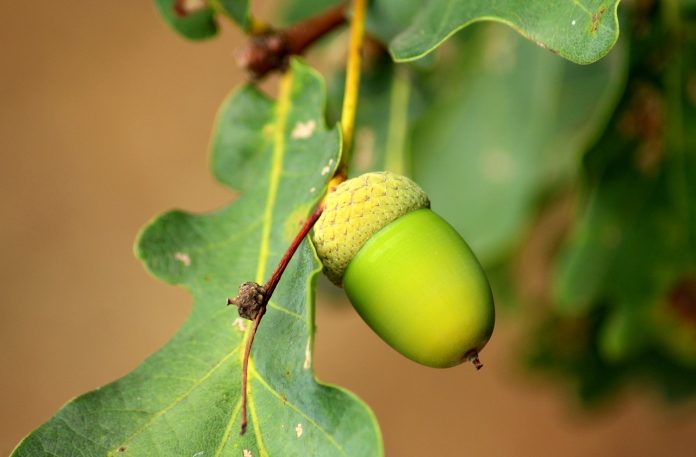COLUMBUS — The Ohio Department of Natural Resources Division of Wildlife annually surveys oak trees for acorn abundance at 38 wildlife areas. This year’s survey results showed an average of 40% of white oaks and 49% of red oaks bore fruit, meaning white oak production is slightly above average and red oak production is slightly below average.
“Many of Ohio’s native wildlife species depend on oak trees and the acorns they can produce by the thousands,” said Division of Wildlife Chief Kendra Wecker. “More than 90 forest wildlife species depend on acorns for survival. A small sample of these species includes deer, squirrels, wild turkeys, woodpeckers, blue jays, raccoons, foxes, coyotes, mice, ruffed grouse, and wood ducks.”
Division of Wildlife employees scan the canopies of selected oak tree wildlife areas to determine the percentage that produced acorns as well as the relative size of the acorn crop. This is the 17th year the Division of Wildlife has completed the acorn production survey.
The proportion of white oaks bearing acorns increased 13% from 2020, while red oak proportion decreased 20%. The long-term average for white oak acorn production is 37%, and 55% for red oak acorn production. All results, including tables and historical numbers, can be found at wildohio.gov.
In addition to determining the presence or absence of acorns, observers estimate the percentage of each tree’s crown that is covered with acorns. The average crown coverage of acorns for white oaks was 10%, up significantly from last year’s 6% coverage and near the long-term average of 9.5%.
The average crown cover for acorns for red oaks was 18%, a decrease from last year but near the long-term average of 20%. Acorns come in two basic types: red and white. They are divided into these groups based on the type of oak tree.
Red oak acorns take two years to develop, and the acorns are bitter, containing a large amount of the chemical tannin. White oak acorns take only one year to develop and have a sweeter taste. As a critical food source for many forest wildlife species, acorn abundance has been linked to body condition, winter survival and reproductive success.
A year with low acorn abundance causes deer and other wildlife to move around more and search for food. In areas with poor acorn production, wild animals are more likely to feed near agricultural areas and forest edges.
Oak trees have value beyond food and shelter for wildlife. Collect mature acorns in the fall and place them in a bucket of water. Keep the ones that sink and discard any that float, as those won’t germinate.
Store the remaining acorns in the refrigerator or outside for at least eight weeks in the winter months. Plant the acorns under a shallow covering of soil in the early spring, water regularly and enjoy seeing your new oak trees start to grow.










